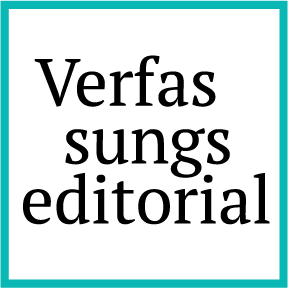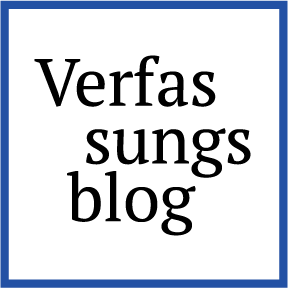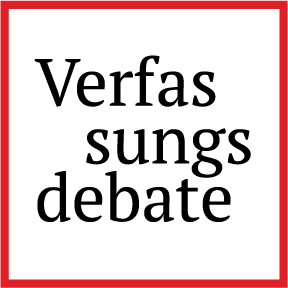The Logic of Domestic Military Deployments
What Newsom v. Trump Tells Us About Why Trump Hasn’t Invoked the Insurrection Act
With all the outlandish legal arguments the Trump administration has deployed in the nine months since Inauguration Day, it has been genuinely puzzling that the president hasn’t yet invoked the Insurrection Act. Previously undisclosed facts revealed during the Newsom v. Trump bench trial, however, shed light both on how the motivations for these military deployments are being internalized by the military establishment and why there is not yet demand for invoking provisions of the Insurrection Act. In a nutshell, these facts demonstrate how the president’s desire to intimidate the public is being internalized by the military. What’s more, they show the substantial degree to which military and federal law enforcement personnel are fungible in achieving this primary objective of intimidation. And finally, interagency machinations reveal why the supported federal law enforcement agencies may well prefer the current posture of military support to what would be provided if the president invoked the Insurrection Act.
Litigation following the mobilization of the National Guard
To refresh everyone’s memory, on June 7, 2025, President Trump authorized the mobilization of National Guard personnel to protect federal persons, property, and functions to ensure that deportation raids could continue unimpeded. Shortly afterwards, the Secretary of Defense authorized the deployment of California National Guard members and active-duty Marines to Los Angeles. Since then, litigation has moved along two tracks. First, assessing whether the president properly invoked 10 U.S.C. § 12406 to bring the California National Guard onto federal duty. And, second, determining whether the military’s activities in Los Angeles violated the Posse Comitatus Act (PCA).
The PCA is a nineteenth-century criminal statute prohibiting use of the federal military to conduct law enforcement operations absent an express statutory or constitutional authorization to do so. The most well-known statutory exceptions to the Act are provisions of what is commonly called the Insurrection Act. Codified in Chapter 13 of Title 10 of the U.S. Code, this is a trifecta of statutes authorizing the president, in particular factual circumstances, to use the military to suppress domestic disturbances. Courts have long held that the president has broad discretion in determining whether the factual predicates for invoking the Insurrection Act exist. And the statutes articulate the president’s power after invocation quite broadly. 10 U.S.C. § 251, for example, authorizes the president to “use such of the armed forces[] as he considers necessary to suppress the insurrection,” full stop. For more on the history of these statutes and how the executive branch has interpreted them over time, see these fantastic pieces from Steve Vladeck and Laura Dickinson.
What the facts of Newsom v Trump reveal
The facts revealed by Newsom v. Trump are helpful, first, in confirming a core motivating principle of Trump’s domestic military deployments—public intimidation. Many others have noted that intimidation is at the heart of Trump’s domestic military deployments. What the facts of Newsom v. Trump help us understand is how this dynamic gets translated through the federal bureaucracy.
In the earliest days of the Los Angeles deployment, federal law enforcement agencies were “not clear” on the role federal troops would play (pg. 9). But every hammer will find a nail, and so by mid-July military personnel accompanied ICE officers on 75 percent of their deportation operations in and around LA (pg. 11). Particularly noteworthy among the many operations on which the military accompanied law enforcement agents was the march across MacArthur Park on July 7. Called “Operation Excalibur,” 80 military personnel deployed in Humvees and tactical vehicles around MacArthur Park, a 35-acre park near downtown LA, while federal law enforcement officials marched “to demonstrate, through a show of presence, the capacity and freedom of maneuver of federal law enforcement” (pg. 12). To drive the point home, a government slide deck describing the operation stated that Operation Excalibur was designed to “enable and protect the execution of joint federal law enforcement missions in a high-visibility urban environment, while preserving public safety and demonstrating federal reach and presence” (pg. 12).
Stripping out the government-speak, the message here is clear: the intent of this march was to impress on Los Angeles residents the overwhelming coercive power of the federal government. The fact that the Secretary of Defense personally approved the military’s participation is perhaps an indication that leadership at lower levels was uncomfortable with approving ICE’s request to support Operation Excalibur. But in a bureaucracy that relies so significantly on precedent, what starts as a one-off decision by a senior decisionmaker can quite quickly become standard operating procedure for a much wider swath of lower government officials.
The facts of Newsom v. Trump also reinforce that, while the military has an important role to play in creating this atmosphere of intimidation, it is far from the only arm of the federal government capable of doing so. At trial, Major General Scott Sherman, the commanding officer for all military personnel deployed in and around Los Angeles, and Ernesto Santacruz, director of ICE’s Enforcement and Removal Operations, were both asked to differentiate military personnel from federal law enforcement personnel. Frequently, they were unable to do so (pg. 10). This is, in a way, unsurprising after many decades of militarization of federal and local law enforcement. But it is particularly consequential if one of the key motivations of a military deployment is to intimidate the public. The fact that military personnel are being deployed in Los Angeles, DC, and potentially elsewhere is, of course, incredibly problematic and corrosive of our democracy. But equally consequential to the logic of intimidation and suppression of the public is the monumental deployment of militarized, armed, federal law enforcement agents to the streets of the United States. Focus on the proper role of the military should not eclipse the effects that federal law enforcement deployments can and will have on a political community.
The broad scope of ‘protection’
Finally, the many examples of how the military has supported federal law enforcement in Los Angeles suggest why there may still be less demand signal for invoking the Insurrection Act from within the federal bureaucracy than one might expect. First, the Defense Department has gone to great lengths to recast requests for law enforcement support as requests for protection, thereby making their deployment (on paper) seem to resonate more closely with the theory of implied presidential power which underpins the military’s deployment in LA. U.S. Army North, for example, sent an email coaching federal law enforcement agencies on the terminology to use in requesting military support: replacing “protection” for “security” and “detect, monitor, and report” for “surveillance” (pgs. 9-10). This was truly just an exercise in replacing verbiage—the record shows that the Defense Department did not provide what the legal limits of “protection” could entail. This, in turn, may explain the wide range of support tasks military personnel performed, some quite far from downtown LA. To take just one example, on July 10 between 100 and 120 military personnel deployed to a cannabis farm in Carpinteria, California (pg. 13-14). There was no specific threat to federal law enforcement agents for this raid—Homeland Security Investigations requested military assistance to set up traffic control points solely to ease the logistical burden on its officers.
This example neatly captures how much discretion federal law enforcement agencies can currently exercise in determining the military’s activities. Armed with the lexicon of “protection” provided by the Defense Department, a laundry list of support activities, bespoke to the desires of officers on the ground, are available. This provides a degree of flexibility which would be much harder to achieve were the military to operate under provisions of the Insurrection Act—charged directly with the responsibility to suppress domestic disturbances. There is, quite simply, very little incentive for federal law enforcement agencies to urge that the president empower the military and thereby forego the flexibility and local control they currently enjoy.
Conclusion
Newsom v. Trump has provided our most detailed look into how the federal government has operationalized Trump’s desire to insert the military into ever more areas of domestic public life. In some respects, these details confirm existing narratives on the administration’s aims—to intimidate the American public into abiding by his dictates. In others, these details remind us to take a more holistic view on the potential for federal law enforcement as well as military deployments can have on democratic institutions. Still others help explain why the administration has been so reticent in invoking provisions of the Insurrection Act. Going forward, as public leaders and citizens alike contemplate what role litigation may play in counteracting the Trump administration’s designs, we would do well to remember the importance of uncovering facts such as these.



